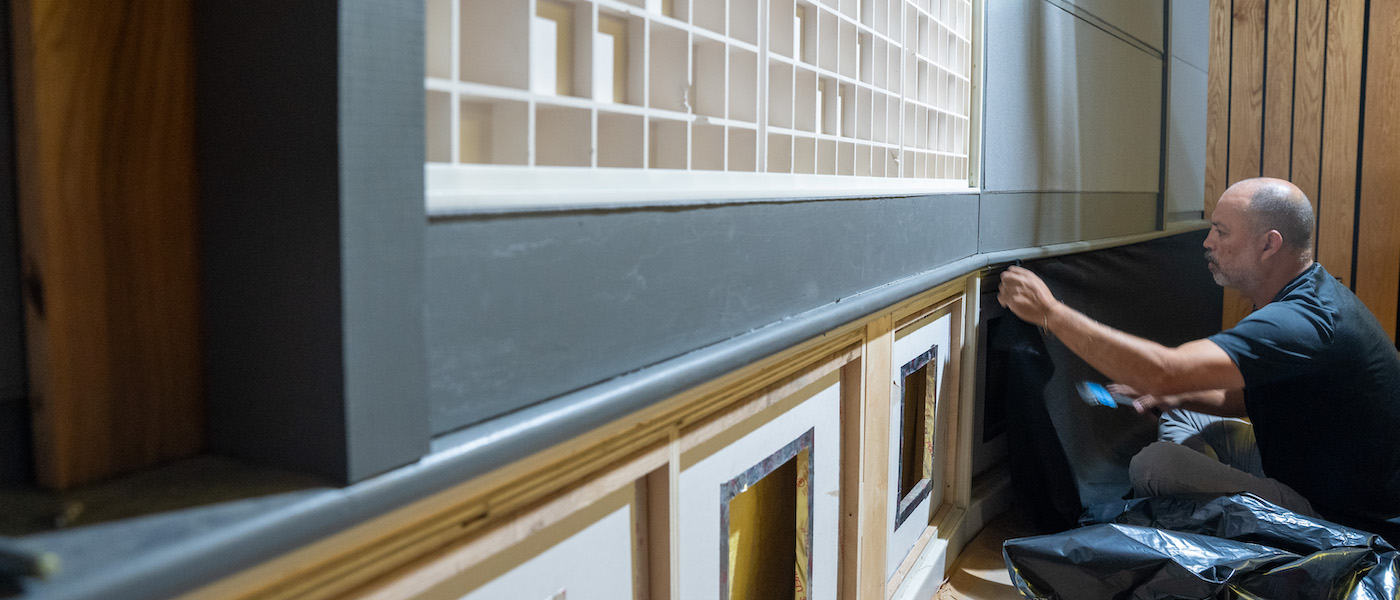Belmont University's Robert E. Mulloy Studio B has undergone a major renovation to upgrade the space from traditional stereo mixing to Dolby Atmos. The renovation marks a significant milestone for Curb College’s audio engineering program, giving students the ability to mix with more precision, space and freedom.
Studio B, one of four studio spaces in the basement of the Barbara Massey Rogers Center (formerly the Jack C. Massey Center), was originally built in the early 1990s and has remained largely untouched since. While stereo mixing is likely here to stay, teaching students to mix in Atmos allows greater flexibility and career readiness.
“Some of the ideas and techniques for studio design have changed over the last 30 years, in addition to how music is produced and edited,” said Michael Janas, Audio Engineering Technology department chair. “Traditionally, engineers have had to work in the confines of a stereo field with just two speakers. With Atmos, students gain access to three-dimensional audio, allowing sound to play in every direction: above, below, in front and behind.”
 While Dolby Atmos is new to Belmont for the Audio Engineering program, the technology is not new to campus. In 2015, Belmont’s Motion Pictures program was the first university-based film program capable of showing commercial films and developing and producing theater-ready films in the Atmos format in the world and remains one of the only with a cinema-sized Atmos mixing environment.
While Dolby Atmos is new to Belmont for the Audio Engineering program, the technology is not new to campus. In 2015, Belmont’s Motion Pictures program was the first university-based film program capable of showing commercial films and developing and producing theater-ready films in the Atmos format in the world and remains one of the only with a cinema-sized Atmos mixing environment.
Atmos, first introduced in 2012, revolutionized audio by adding new dimensions to sound. The Studio B upgrade marks a significant moment as it becomes Belmont’s first studio where students can utilize Dolby Atmos for mixing music.
Dolby Atmos for music differs from its theater counterpart. While Atmos theaters require specific designs for optimal speaker functionality, music production can adapt to various room setups, certified by Dolby for speaker placement. This versatility prepares students to enter numerous sectors within the audio industry.
“Learning to mix in Atmos means learning a new workflow,” said Janas. “It’s a new way of thinking because you’re not limited to only having two speakers. Now, you have the ability to go 180 degrees all the way above and around you.”
The new technology comes with a learning curve and changes what equipment might traditionally be use for mixing. For instance, engineers may not need to use a compressor (which controls how loud something can get) because they can simply put the sound in a different area.
REM Studio B is the first Belmont studio specifically used for mixing music in Atmos. Students will be able to mix a project in traditional stereo and then be able to come in and mix the same thing in Atmos, which is a common professional practice.
The upgrade allows the University to expand its course offerings into more diverse audio segments — such as video games — and offers more space for collaboration with motion pictures production. Renovations are expected to be complete in mid-October, allowing students and faculty to learn the new workflow prior to the spring semester.

